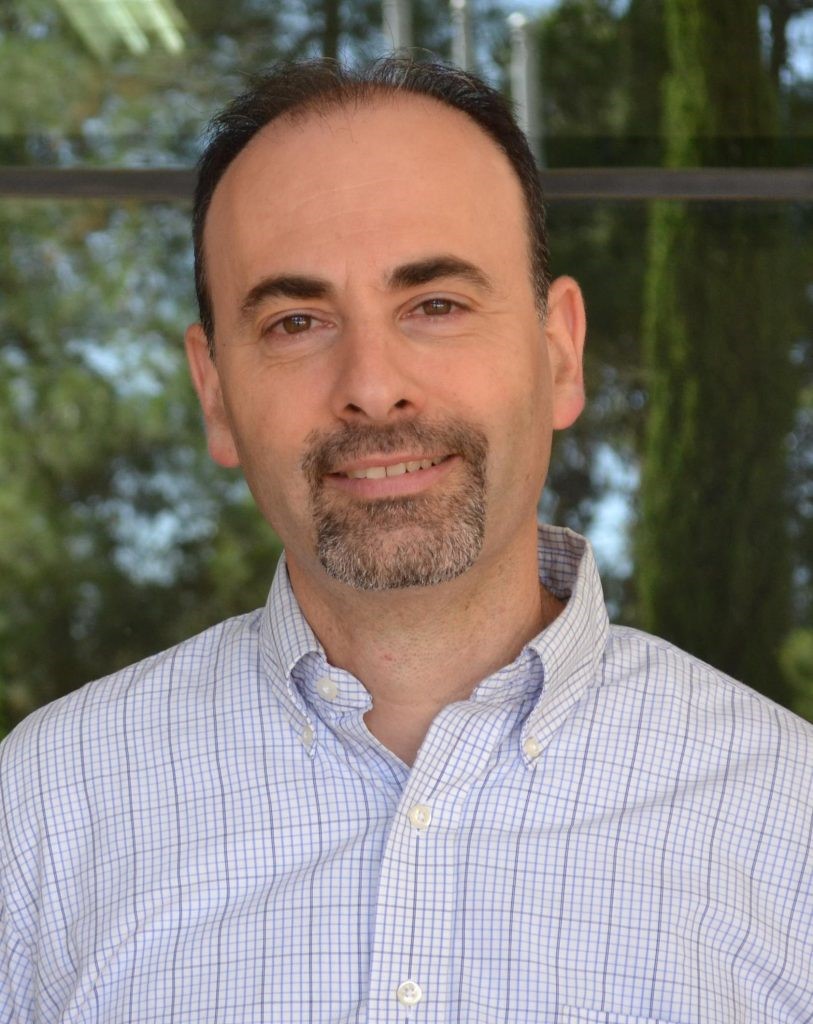Prof. Boaz Pokroy
Faculty:
Materials Science and Engineering
Main energy field:
Photovoltaics
About:
PhD – 2006 – Technion – Materials Science & Engineering
MSc – 2003 – Technion – Materials Engineering
BSc – 2000 – Technion – Materials Engineering & Chemistry
Roles, Chairs, Prizes
2021 – The Bank Discount Academic Chair Award
2020 – Henri Gutwirth Prize for Promotion of Excellence in Research
2020-present – Member of the “Mechina” Faculty Committee
2020-present – Member, Departmental Graduate Committee
2015-2020 – Delegate in the Technion Senate
2017-present – Member, Science Advisory Committee of the European Synchrotron Facility (ESRF) Grenoble, France
2015-present – Member of the National Synchrotron Committee of the Israel Academy of Science
2016 – Norman Seiden Prize for Excellence in Research
Research Area in Energy:
Manipulating band gap of semiconductors for photovoltaic applications; Gold catalysis
Research Interests:
Renewable Energy Sources – Photovoltaics
Fine tuning of the band gap is an important target in photovoltaic applications. We employ novel bio-inspired route to tune the band gap of semiconductors belonging to UV-VIS and infra-red absorption spectrum as well of hybrid perovskite semiconductors. Widening of a band gap is achieved as a result of incorporation of single amino acids into the crystalline lattice of the semiconducting crystals. Upon such an incorporation the lattice of the crystals undergoes either shrinkage or expansion. This is accompanied with obvious alterations in the optical and thermal properties of the semiconductor hosts.
Gold Catalysis – Bio-inspired nonporous gold for catalytic converters
Nanoporous gold has great potential in various applications and mainly in catalysis owing to its noble properties and high surface area. In particular, nanoparticulate Au-based catalysts have been shown to have the best low-temperature activity for CO oxidation of all catalysts. Their activity at low temperatures exceeds that of catalysts based on platinum group metals by a factor of 5. However, at elevated temperatures gold nanoparticles were shown to undergo fast coarsening and sintering eliminating its catalytic activity. Therefore, nanoparticulate Au-based catalysts cannot be effectively used in many applications, in particular in catalytic.
In our lab we have developed a novel method to form thermally stable nanoporous gold inspired by the ability of organisms to form sponge-like single crystals with intricate morphology.
Nanoporous gold formed via our proposed method exhibits superior thermal stability relative to classical nanoporous gold prepared by dealloying.
Our nanoporous gold has the potential to finally allow gold to be used in catalytic converters, which will solve the cold-start problem and lower the level of toxic emissions and the price of catalytic converters.
Selected Publications:
Lang A, Brif A, Polishchuk I, Kurashvili M, Feldmann J, Pokroy B. Band Gap Tuning of the Near Infra-Red Semiconductor Lead (II) Sulfide using the Incorporation of Amino Acids. Adv Opt Mater. Under review, 2022.
Lang A, Polishchuk I, Seknazi E, Feldmann J, Katsman A, Pokroy B. Bioinspired Molecular Bridging in a Hybrid Perovskite Leads to Enhanced Stability and Tunable Properties. Adv Funct Mater 2020; 30:2005136.
Polishchuk I, Bianco-Stein N, Lang A, Kurashvili M, Caspary Toroker M, Katsman A, Feldmann J and Pokroy B. Strong Band Gap Blueshift in Copper (I) Oxide Semiconductor via Bio-Inspired Route. Adv Funct Mater 2020;30(13):1910405.
Abubaker H.M.M, Lamers M, Baumann V, Dey P, Adam J. Blanch A.J, Polishchuk I, Kong X-T, Levy D, Urban A.S, Govorov A.O, Pokroy B, Rodríguez-Fernández J, and Jochen Feldmann J. Strong Quantum Confinement Effects and Chiral Excitons in Bio-Inspired ZnO-Amino Acid Co-Crystals. J Phys Chem C 2018;122: 6348.
Koifman-Khristosov M, Dishon S, Noi I, Katsman A and Pokroy B. Pore and Ligament Size Control, Thermal Stability and Mechanical Properties of Nanoporous Single Crystals of Gold. Nanoscale 2017;29:4912.
Brif A, Ankonina G, Drathen C, Pokroy B. Bio-inspired Band Gap Engineering of Zinc Oxide by Intracrystalline Incorporation of Amino Acids. Adv Mater 2014;26:477.


